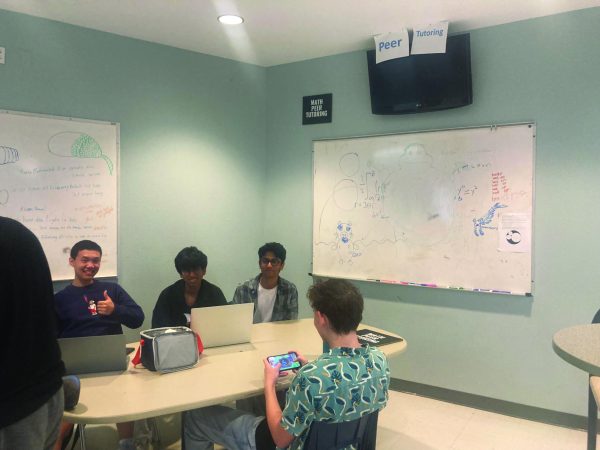Dress Code Changes Perspectives
October 11, 2019
Dress codes are inherently restrictive of students’ clothing choices, especially when implemented in a system that already heavily mandates student behavior. The manner students choose to dress is one of the ways they are able to express themselves and their interests.
New Austin Independent School District (AISD) dress code policies were introduced and put into effect during the 2019-2020 school year with assistance from senior Daylyn Gilbert. Before the recent change, AISD’s dress codes had not been altered since 2007. Gilbert’s efforts to change the dress code began with an experience she had with the previous dress code.
“I got the motivation to speak out against dress code when I was personally dress coded, and I felt it was invalid,” Gilbert said.
After this experience, Gilbert began to look into dress coding policies throughout the district to gain more information. She says the results she found motivated her to speak about what she saw.
“When I looked at the data, it showed how many kids were discriminated against due to gender, race and religion.” Gilbert said. “It made me want to speak out for everyone who couldn’t.”
She created a petition that gained hundreds of signatures and caught the attention of various media outlets. She was interviewed by KXAN and The Austin American-Statesman, among other Austin publications. As the dress code petition gained more and more signatures, other students began to voice their opinions.
“I felt really excited when it started to fully gain momentum, but even with that I faced a lot of backlash from people,” Gilbert said. “Teachers and administrators were very hesitant because of the school policy and didn’t want it to change or to get in trouble for supporting it.”
Senior Sruthi Ilangovan worked with Gilbert on the petition. She and other LASA students supported Gilbert throughout the process of revision.
“I had worked and talked with Daylyn about the dress code change… since we sat in chemistry together, and that’s where she was dress coded,” Ilangoven said. “She talked to me about how she felt it was invalid and we came up with things to change it.”
The dress code reform received backlash from staff and others. They found issues with the student-made petition or the changes it suggested to the dress code.
“Teachers and other people would tell me it was stupid and would never change, but it wasn’t on Daylyn’s level,” Ilangoven said. “People from all over Austin would voice their opinions on the dress code change, and Daylyn became the face of [the movement].”
Soon enough the petition drew enough attention to become successful. The district adjusted the dress code for the 2019-2020 school year.
“When the dress code was changed, it made me feel free and relieved, like any change could be possible,” Ilangoven said.
Assistant principal San Czaplinski enforced the previous dress code. Throughout her career, Czaplinski has seen both sides of the dress code debate.
“When I was a teacher, I just told kids that if they came to school, I would be happy,” Czaplinski said. “But when I got into administration, I saw the other side of that, and how if the school or campus has rules, I want to enforce them. If you’re going to make a rule for me to follow, you have to support it too.”
Czaplinski worked at other schools before coming to LASA, and she believes LASA has a more relaxed environment than other schools. These restrictions were not limited to strictly clothing, either.
“At the campus I was at kids couldn’t wear headphones, they could not have a beard, they couldn’t wear hats, it was much more strict than it is here,” Czaplinski said. “Really, I was often the teacher that would get in trouble because they would have these dress code checks and in the middle of class they would come over the announcements and say ‘teachers at this time, please have every student stand in your classroom’ and then we were supposed to send kids out that were out of dress compliance. We were supposed to call students out… it was absolutely ridiculous. And at that point I used to get really frustrated with that.”
Glen McNeil, a teacher who has worked at LASA for over a decade, noted a difference between the way students dressed in previous years and the way he’s seen them dress recently. He feels the new dress code is too relaxed and can distract some students.
“They don’t ever voice it, but there are more instances of comments and things about people and how they look than there ever have been,” McNeil said. “But more people are caught up in how they look, and yet they are wearing less and less. In order to be fashionable, they still make themselves uncomfortable. And to me, that makes no sense whatsoever.”
McNeil believes that while the district listening to students is generally a good thing, they shouldn’t agree to implement changes solely because those changes are popular.
“This present administration, not Ms. Crescenzi, but the ones downtown– they actually listen to the public a lot more than others did before,” McNeil said. “Obviously it’s good in a lot of ways, but if you let a mob rule, sometimes bad things happen that nobody intends to happen…. Sometimes they don’t always know what’s best for them, and that’s a weird way to think about it, but in my opinion that’s still true in some cases.”
School administrations may have different reactions to the new policy updates. However, Czaplinski believes changes will be beneficial for LASA as a campus.
“Every campus is different, so in some campuses it won’t matter, and in some campuses it will matter more than others, but I think LASA is very relaxed, so I think for us, it can be a good thing, but for other campuses it might not be,” Czaplinski said.










